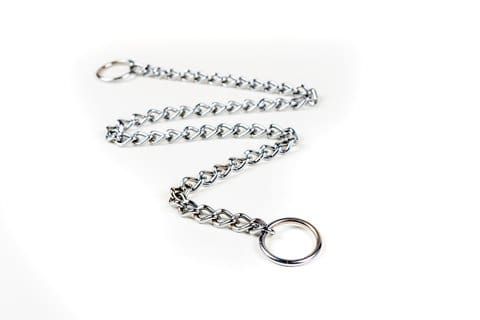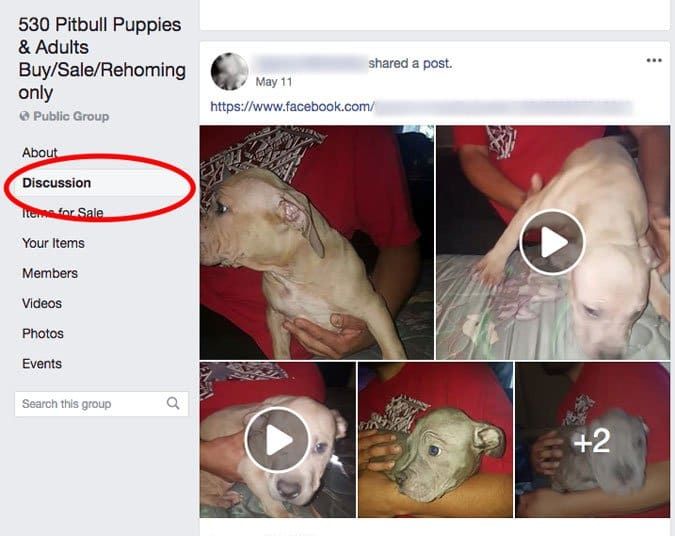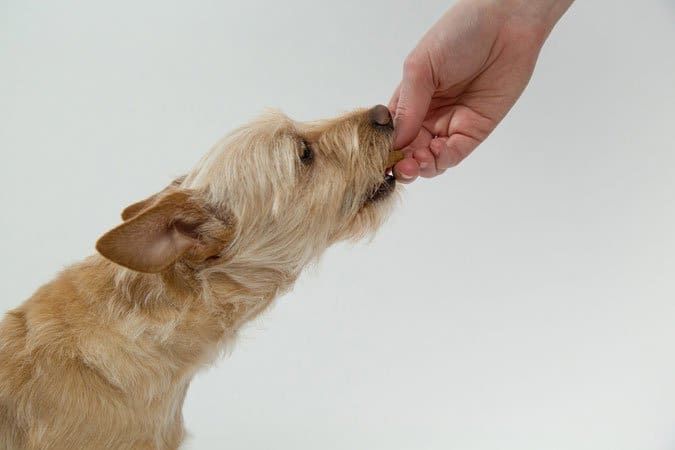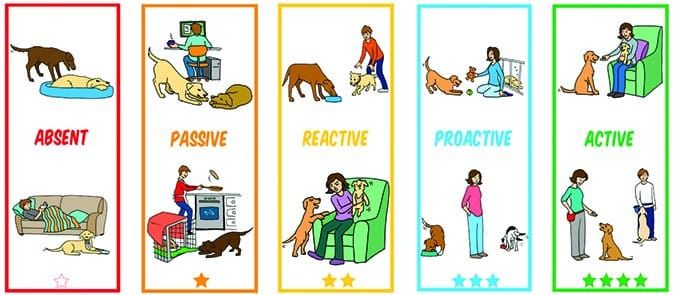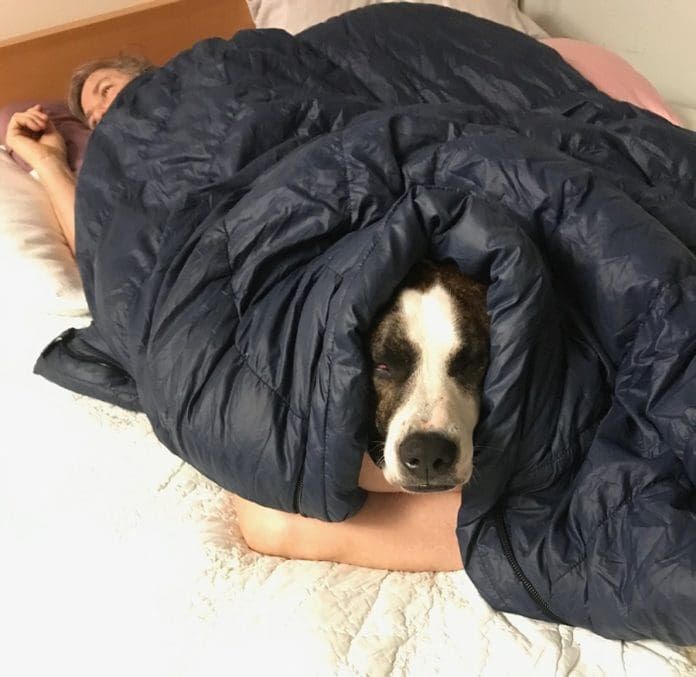Most people think of Lyme disease being caused by ticks – and that’s partly true. The organism that actually causes Lyme disease is a spirochete bacteria called Borrelia burgdorferi; ticks just pick up, carry around, and transmit the bacteria into the creatures they feed upon. The best way to prevent your dog from getting Lyme disease, then, is to prevent his exposure to ticks. Sound easy? Anyone whose dog has ever had Lyme disease can tell you that it ain’t necessarily so.
Lyme disease is named for Lyme, Connecticut, the town where it was first discovered. While most common in the northeastern United States, Lyme exposure has been recorded in all 48 of the continental United States. Lyme is most common in the northeast, upper Midwest, and parts of California, but can be present anywhere that Ixodes ticks are found – which is just about everywhere. The Companion Animal Parasite Council’s website has an interactive map that shows how many Lyme disease tests were performed and how many animals tested positive in each state.
How Do Dogs Get Lyme Disease?
Dogs get Lyme disease after being bitten by an infected tick: Ixodes scapularis in the northeast and upper Midwest (commonly called a deer tick), or Ixodes pacificus in the west (deer tick or black-legged tick). These ticks have a two-year life cycle that takes them through four life stages (egg, larvae, nymph, adult.)
Ticks do not hatch carrying B. burgdorferi spirochetes. Instead, they pick up the bacteria from feeding on infected hosts, often mice. When a tick feeds on an infected animal, spirochetes enter the tick along with the animal’s blood. The spirochetes then remain inside the tick’s midgut until the tick feeds again, at which point the spirochetes move to the tick’s salivary glands. They get “spit out” by the tick into the dog’s body at the end of the tick’s feeding session, entering the new host’s bloodstream.
Because of the necessary migration through the tick, transmission is not instantaneous – but it may be faster than what has been previously reported, even by reliable sources like the Centers for Disease Control and Prevention. According to lymedisease.org, some studies have shown that the Lyme-causing bacteria was transferred from a tick to its host in less than 24 hours. Once transmitted, B. burgdorferi infects the dog’s joint capsules, muscles, and lymph nodes. It takes several months for an infection to cause clinical signs.
However, just because a dog is exposed does not mean that he will go on to develop clinical signs of Lyme disease. According to the Cornell University College of Veterinary Medicine, only five to 10 percent of dogs infected with B. burgdorferi develop clinical signs of Lyme disease.

Symptoms of Lyme Disease in Dogs
There are three “states” of Lyme disease in dogs: acute, subacute, and chronic. Symptoms generally do not appear until after a two- to five-month incubation period, and can take even longer. Affected dogs may first shows signs of any of the three states, and may progress to others depending on the severity of infection, the dog’s immune system, and treatment.
Symptoms of acute Lyme disease include fever, lethargy/reluctance to move, depression, fatigue, anorexia (loss of appetite), pain, swollen lymph nodes, acute arthritis in one or more joints, swollen joints that may be warm to the touch, and a “shifting” lameness from one leg to another.
Symptoms of subacute Lyme disease incllude persistent lameness, ongoing inflammatory changes in the joints, and arthritis (either transient or persistent).
Symptoms of chronic Lyme disease include cardiac signs such as arrhythmias, neurologic signs, arthritis, and kidney damage.
In rare cases, kidney damage can escalate to Lyme nephritis, which is usually fatal. Signs of Lyme nephritis include anorexia, vomiting, weight loss, muscle wasting, lethargy, bad breath, azotemia (elevated creatinine and BUN), and edema (excess fluid). Golden and Labrador Retrievers seem to be predisposed to developing Lyme nephritis, so extra care should be taken with dogs of or mixed with these breeds if they contract Lyme disease.
The symptoms of Lyme disease can also be caused by a wide variety of other conditions, ranging from ehrlichiosis (a different tick-borne disease) to orthopedic conditions such as a torn cruciate ligament or even cancer. This makes diagnosis more challenging (and expensive), as the veterinarian must rule out a variety of conditions.
Lyme Disease Treatment for Dogs
According to Justine A. Lee, DVM, DACVECC, DABT, of St. Paul, Minnesota, the decision to treat “should be based on the presence of clinical signs, breeds at risk for developing life-threatening chronic effects (e.g., breeds predisposed to Lyme nephritis), and presence of proteinuria or microalbuminuria.” Dogs with clinical signs should be treated to provide relief, and breeds at higher risk of developing Lyme nephritis should be treated as a preventative measure.
Proteinuria (the presence of protein in the urine) and microalbuminuria (an increase in the amount of albumin in the urine) are signs of kidney damage, and so suggest the potential for Lyme nephritis. Proteinuria is considered significant only in the absence of a urinary tract infection (UTI), so a UTI must be ruled out before proceeding.
Microalbuminuria can’t be measured with a standard urinalysis; it requires special testing, which is unnecessary if proteinuria is seen. It can also be caused by other types of infection or inflammation.
Doxycycline is the antibiotic of choice for most Lyme disease cases. Other options are amoxicillin, minocycline, and Convenia (cefovecin sodium). The dog’s clinical symptoms should resolve rapidly after starting treatment, but the full course of medication must be given to ensure that the infection has been completely cleared and all spirochetes killed.
Most veterinarians currently use a four-to-six week treatment course, but some prefer a longer treatment time of up to eight weeks. Higher doses of doxycycline than usual, 10 mg/kg twice a day, may be more effective. If the dog does not improve within two or three days, screening needs to be done for other diseases or conditions.
Don’t be surprised if your veterinarian does not prescribe a pain reliever for your limping dog suspected of having Lyme; if she truly has Lyme, the antibiotics alone will resolve her lameness quickly, and if she doesn’t, giving corticosteroids or NSAIDs could give a false sense of security while the true underlying problem goes undiagnosed.
Dogs with chronic Lyme disease should have their urine checked for proteinuria and microalbuminuria every three to six months. If proteinuria persists after a four- to six-week course of antibiotics, further renal-supportive measures will need to be taken and your veterinarian may recommend another course of antibiotics and/or a kidney biopsy to rule out immune-mediated glomerulonephritis.
Before doing a biopsy, discuss with your vet how likely the results are to change treatment and prognosis. Kidney biopsies can damage the kidneys and rarely impact treatment or prognosis. Glomerulonephritis can also be diagnosed via urine protein:creatinine (UPC) ratio.
For dogs with Lyme nephritis, treatment is primarily supportive care and will likely include fluid therapy along with dietary management and medications to support the kidneys and gastrointestinal tract.
Treatment is generally not recommended for dogs who have no clinical signs, have no signs of kidney damage, and are not among the breeds at greater risk developing Lyme nephritis. This is because the majority of dogs exposed to Lyme disease do not go on to develop it, and antibiotic therapy comes with its own risks and complications, including gastrointestinal upset, changes to the microbiome, and increased liver enzymes. Overuse of antibiotics also contributes to antibiotic resistance.
If your dog falls into this category and you have concerns, make an appointment to discuss this with your veterinarian to determine the best plan for your dog and your situation. Even if you choose not to treat your dog at this point in time, you and your vet can set up a plan for monitoring your dog’s blood and urine values to catch any developing complications early. An annual urinalysis should already be part of your dog’s routine vet care.
Should You Vaccinate Your Dog for Lyme Disease?
There are several vaccines available for Lyme, each of which work slightly differently. There are different strains of B. burgdorferi spirochetes in different environments, and each produces different “outer surface proteins” (Osp). Lyme vaccines are made with different combinations of outer surface proteins, and work differently based on what proteins they include.
OspA is produced by spirochetes in a nutrient-poor environment, such as inside a tick that hasn’t fed, and is consistent across B. burgdorferi strains. If your dog has received a vaccine based on OspA, the OspA antibodies that are circulating in her bloodstream will enter a tick when it bites and attack the spirochetes in the tick’s midgut. That means the spirochete is targeted before it even enters your dog, and because of this, just about every Lyme vaccine includes it. The downside is that your dog must have a high level of circulating antibodies in order for the vaccine to be effective. Antibody production varies from dog to dog, and a series of titers would be necessary to know how your dog’s immune system responds to the vaccine and how long immunity remains. Because the dog’s immune system is never directly challenged by the spirochete, there is also no potential for immune memory.
OspC is produced in a nutrient-rich environment, such as a tick that is actively feeding and filling with blood, or inside your dog. If your dog has received a vaccine based on OspC, the OspC antibodies circulating in her bloodstream will attack the spirochetes when they enter the dog’s bloodstream and adapt to the nutrient-rich environment. The plus to OspC vaccines is that there is much more potential for immune memory, because your dog’s immune system will encounter the actual antigen. The downside is that the spirochete will gain access to the dog, and if the dog is bitten by a tick carrying a different strain of B. burgdorferi than what she was vaccinated against, the immune system won’t recognize the spirochete as a threat.
Some vaccines combine both OspA and OspC for dual coverage. Vanguard has developed a vaccine that combines chunks of seven different OspC proteins along with OspA.
The other type of vaccine is a bacterin. A Lyme bacterin consists of B. burgdorferi spirochetes that have been killed or otherwise rendered inactive. Depending on the culture in which the bacteria were grown, they may have OspC proteins, but are more likely to have OspA.
Vaccinated dogs can still become infected with B. burgdorferi. This can be due to exposure to a different strain than what was included in the vaccine, or due to insufficient antibody production/levels in the individual dog.
How often should you vaccinate? There isn’t consensus on this in the veterinary community. There is some support for six-month boosters, but at this point the only safety studies done have been for the standard two-dose initiation followed by annual boosters. Tracking titers after vaccination is an option to watch how each dog’s antibody levels change over time, but this is expensive.
Vaccination is recommended for healthy dogs at an increased risk for exposure to ticks carrying Lyme, such as those living in Lyme-endemic areas or those who spend a lot of time in the woods. Vaccination for dogs who are ill or already proteinuric is not recommended.
While vaccination can be an effective part of your dog’s Lyme prevention plan, it does not take the place of tick preventives and environmental management. Discuss with your veterinarian whether or not a Lyme vaccine might be useful for your dog.
Lyme Vaccines on the Market Today
| VACCINE | MAKER | TYPE |
| Duramune Lyme | Elanco | Bacterin – has both OspA and one OspC |
| LymeVax | Zoetis | Bacterin – has both OspA and one OspC |
| Nobivac Lyme | Merck | Bacterin – has both OspA and one OspC |
| Recombitek Lyme | Merial | OspA |
| Vanguard crLyme | Zoetis | OspA and at least 7 types of OspC |
Lyme Testing and Diagnosis
When a dog is exposed to B. burgdorferi, his immune system will make antibodies in response to the outer surface proteins on the spirochete. Lyme tests generally look for antibodies to these outer surface proteins. It takes at least three to four weeks for antibodies to develop after a dog has been exposed; testing before that time may produce false negative results. Testing positive for Lyme does not mean that the dog actually has or will develop clinical signs of Lyme disease – it just means that the dog has been exposed.
The SNAP 4DX Plus test offered by IDEXX evaluates whether or not a dog has antibodies to the C6 peptide, a chain of amino acids present in the spirochete. This test is appropriate to answer the question, “Has my dog been exposed to B. burgdorferi?” with a yes or no answer. To run the test, your veterinarian will need a few drops of your dog’s blood. It takes only eight minutes to run, so you can know your dog’s results before leaving the clinic. This test also checks for two other tick-borne diseases (ehrlichiosis and anaplasmosis), and heartworm. Results should not be affected by Lyme vaccination.
Two tests offered by Abaxis – VetScan Canine Lyme Rapid Test and VetScan Flex4 Rapid Test (which also tests for ehrlichia, anaplasmosis, and heartworm) – also evaluate whether or not the dog has been exposed to Lyme. There is potential for this test to give a false positive if the dog has received a Lyme vaccine that includes the OspC protein.
Follow-up testing to quantitatively measure antibody levels gives more information about a dog’s Lyme status, but requires interpretation. There is no standardized level of antibodies that says that a dog is or is not currently infected – different dogs will produce different numbers of antibodies. Tracking antibody level over time, however, can tell you that an infection is clearing or has cleared (antibody level going down due to lack of bacteria present to target) or that reinfection has occurred (antibody level goes down, then jumps back up due to new exposure). Some dogs may have antibodies present in their blood years after the infection has cleared due to immune system memory.
One quantitative test is the Lyme Quant C6 Test offered by IDEXX, which gives an antibody level for the C6 peptide, as well as a general reference range suggesting whether to treat or not (an antibody level great than 30U/ml is considered worth treating). C6 antibodies are produced only by exposure to B. burgdorferi, not a Lyme vaccine, avoiding any confusion with Lyme-vaccinated patients.
Another quantitative test is Cornell University’s Lyme Multiplex Assay, which checks for three different proteins: OspA, OspC, and OspF. OspA antibody levels indicate that a dog has been vaccinated for Lyme, OspC indicates early infection and can be detected as early as three weeks after infection, and OspF indicates chronic infection. It is possible to get a false positive on this test if your dog has been vaccinated with a vaccine that included OspC. Even without treatment, OspC titers will go down after three to five months, but OspF titers (which show up by six- to eight weeks post-exposure) will remain increased if the dog is not treated.
Always include the date and type of any Lyme disease vaccine that has been administered to your dog on the submission paperwork that accompanies your dog’s Lyme test. This will allow the lab to give a more accurate report, factoring in any potential false positives due to vaccination.
None of these tests can indicate whether a dog will or will not become ill. Diagnosis of Lyme disease requires a full exam by your veterinarian and consideration of any clinical signs, including kidney and urine values. And due to the nonspecific nature of Lyme symptoms, it is possible that a dog’s Lyme-positive status is incidental and not the actual cause of illness.
So should you test for Lyme if your dog is healthy? That is a choice to be made between you and your veterinarian. If your clinic offers the SNAP 4DX or VetScan Flex 4 tests, you will probably have that done yearly anyway to check your dog for heartworm infection, which is very dangerous to dogs, as well as the other tick-borne diseases. A positive Lyme result can remind you to drop off that annual urine sample for evaluation to look for protein in the urine, especially if you have a breed or mix at higher risk of developing Lyme nephritis (or if your dog already has kidney issues).
If your dog is showing signs of Lyme, testing can help to determine whether or not Lyme is the culprit. However, at this point in time, the only way to be sure that a dog is sick because of Lyme disease is to treat and see if the dog improves quickly. Quantitative tests such as the Lyme Quant C6 can be repeated over time to track changes in the dog’s antibody levels in response to treatment.
Keep in mind that once your dog has been exposed to Lyme, he or she will continue to have antibodies even after treatment. This is a good thing, because it shows that your dog’s immune system remembers the invader. So don’t panic if your dog tests positive on a qualitative test after treatment. Repeating one of the quantitative tests, such as the Lyme Quant C6 or Lyme Multiplex Assay, can give a more accurate idea of whether or not your dog has been re-infected – a new spike in OspC antibodies, for instance, indicates that the dog has been exposed to Lyme again.
How to Keep Ticks Off Your Dog
As they say, prevention is the best medicine. There is no need to worry about whether or not you should treat if your dog is never exposed to Lyme disease in the first place. Tick prevention is the cornerstone of Lyme prevention.
Tick preventives are available in a wide range of formulations, from topicals to collars to oral medications. Most topicals need to be applied monthly, and oral medications may need to be given once a month or every three months. Collars have varying efficacy lifespans, and you need to be sure that the collar is marketed for ticks and not just fleas. Ticks have shown resistance to certain medications in regional areas, so consult with your veterinarian about which products work well in your area. Ticks can be active even in cold weather, so year-round use of preventives is highly recommended.
Environmental management is also important. Ticks dry out in direct sunlight, so keeping your lawn mowed short and clear of leaf litter will help. Keep your dog out of wooded areas or fields of tall grass, especially in the spring and fall when ticks are most active. Fence your gardens to discourage deer and rabbits from bringing ticks onto your property, and control any rodent infestations in your house and outbuildings. Guinea hens, chickens, and to some extent ducks will all eat ticks, so keeping fowl and allowing them to graze your property is an all-natural way to remove ticks.
You can also treat your lawn with parasiticides, though many of us are reluctant to do this, even though ticks can be present in lawns. My own Corgi came up with three in his ear while being walked solely on my front lawn and the college campus next door.
More important than any topical tick prevention is a full physical inspection. After every romp in the woods or in another high-risk area, check your dog thoroughly for ticks. A comb can be useful for parting the coat on longhaired dogs, and flea combs can pick up ticks. Be sure to check your dog’s ears and groin. Keep in mind that nymphs, also called seed ticks, are the size of poppy seeds and difficult to see but can still transmit Lyme and other tick diseases. Nymphs feed in late spring and early summer before molting into adult ticks in the fall.
If you find any ticks, remove them carefully by following these instructions, and dispose of them in a sealed container.
Kate Eldredge is a licensed veterinary technician from Plattsburgh, New York.





